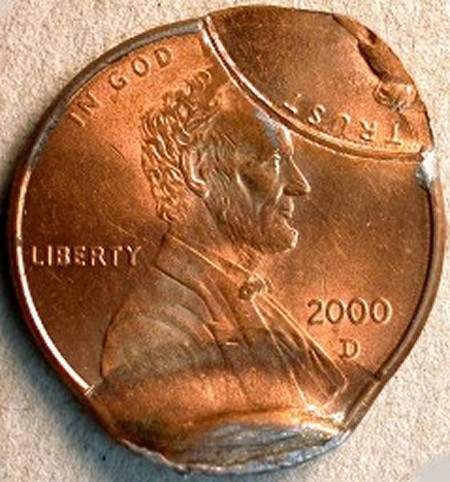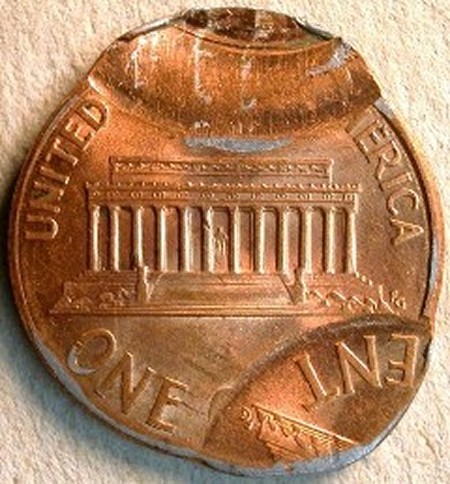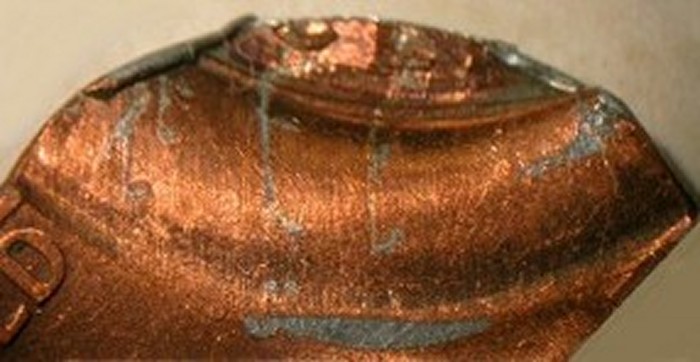PART VI. Striking Errors:
Design Ablation Error:On Second Strike
Definition: The die-struck design on the surface of a coin is scraped off by lateral (horizontal) die movement. This can occur on a first or second strike.


This quadruple-struck 2000-D Lincoln cent was struck with inverted dies (reverse die acting as hammer die). The first strike was normal. The third and fourth strikes were received in tandem as the coin straddled two adjacent striking chambers (a saddle strike). The second strike was off-center, uniface, and incorporates a design ablation error.
During the second strike, the impact of the hammer die on the reverse face was relatively weak, even though the aggregate thickness it confronted was doubled by the presence of an an underlying planchet. After making light contact with the surface of the coin, the hammer die shifted a considerable distance toward 12:00 (reverse clock position). As the die moved northward, it completely scraped off the first-strike design elements and whatever second strike design elements were generated during the initial impact. All that is left is a series of fine parallel striations that expose a little bit of the zinc core.
This is the only known example of a design ablation error on the second strike.
